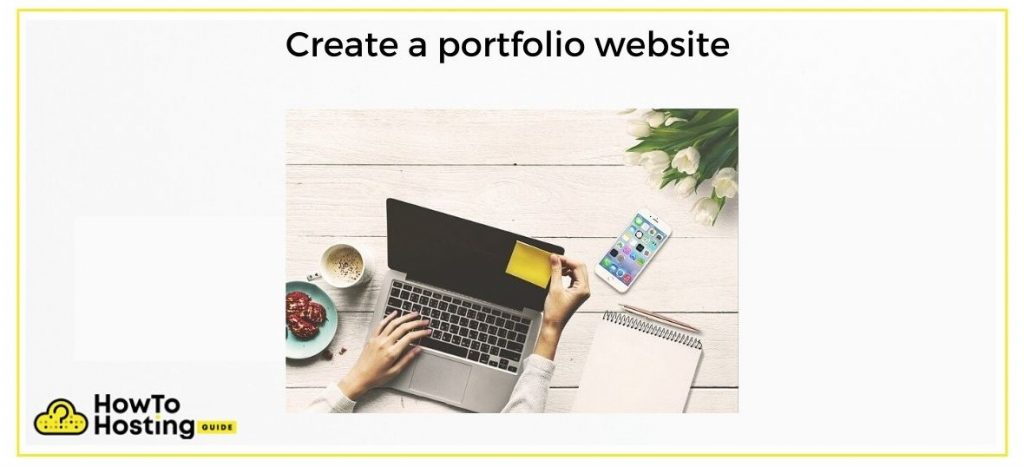On This Page: [hide]
- 1 – What is a portfolio website?
- 2 – What do you need to create a portfolio website?
- 3 – Instructions to create a portfolio website
Portfolio websites showcase the best work of various creative people and freelancers such as artists, photographers, designers, copywriters, etc. However, portfolio websites are often needed by people looking to land a new, better job.
You may be looking into ways to create a portfolio website either because you are looking to expand your career opportunities, or because you want to find new clients for your business. Whatever the reason is, you have a task and you need some help to transform your idea into reality.
You Can Also Read How to Create a Website for Online Courses
What Is a Portfolio Website?
In most cases, portfolio websites resemble a résumé which helps potential clients or employers to view your work. Your portfolio is your professional face – and you need to be friendly and straight-to-the-point. So, long story short, by creating such a website, you will be helping yourself land more clients or get that dream job you have been craving for months.
Before you proceed with building your portfolio website, you should specify its purpose. Do you need it to impress your future clients or future employer? Are you freelancing or are you working for an agency?
By defining the purpose of your portfolio website, it is going to be much easier for you to shape it. In any case, you should select the best of your work and showcase it in the most efficient way. This is especially important in case you are trying to impress an HR or your potential employer. In most cases, these people don’t have enough time to carefully go through every portfolio they receive. That is why you should catch their attention immediately and impress them with your best selections.
If you are having difficulties with the design of your portfolio or need some inspiration, you can check out some portfolio examples on specialized websites. You can also use a pre-made template which will help you with the structure.
What do you need to create a portfolio site?
The list we have compiled below contains the most crucial elements of a successful portfolio website. Each element represents your skills and professionalism, so pay close attention when creating each one of them. You want to inspire your visitors and navigate them through your creative world with grace and ease.
Design
The design of your portfolio site can both open and close doors. With choosing the wrong design, you will be chasing visitors away, be it head hunters or potential clients. The design will be of special importance if you’re working in the field of web design. No matter your niche, though, you should choose a layout that best showcases your work and presents it in the best possible light.
Some useful design tips: select an elegant color scheme, and always remember to use whitespace. Be careful with the number of fonts you use – using too many different fonts is distracting and tends to speak of unprofessionalism. If you plan to use any animations, make sure that they come in the right place and serve a specific purpose.
High-quality images of your work
No matter your niche, all the images you use in your portfolio should be top quality. If you’re a designer or a photographer, using low-quality images would look highly suspicious. The images you select should also communicate smoothly with the overall design of your site.
Logo and tagline
If you’re a designer or photographer, your logo is your signature. It can be creative but it can also be simple. You can choose a text-based logo. And if you add a smartly written, creative tagline to it, you will be answering questions before they are even asked!
Services and skills
This is pretty much self-explanatory. If you offer specific services, you should list them. Choose a spot on your homepage to tell your visitors all about all your services and set of skills. Also, this section is where you can list all the projects you have participated in (if any).
Information about you
This section should include your autobiography, a professionally looking portrait, your expertise and experience, your mission, and whatever else you want to share with your potential clients.
Free samples
If you’re in the creative niche (photography, web design), you may want to tell your future employer or client that you are willing to offer a free sample of your work.
Client testimonials
If you are a freelancer with a sufficient number of happy clients behind your back, include their testimonials to showcase your talent and attitude. Don’t be shy!
You Can Also Read How to Create a Website for Job Application
Optional: a FAQ (frequently asked questions) section
If you offer services that are more complex, you may want to include a section with questions and answers. What are the questions you usually get when being approached by a potential client? Make a compilation of the most frequently asked questions you have received, and help your visitors by providing useful details about your work.

